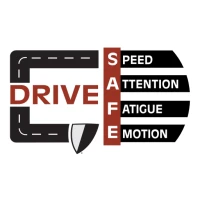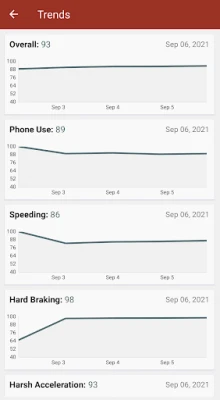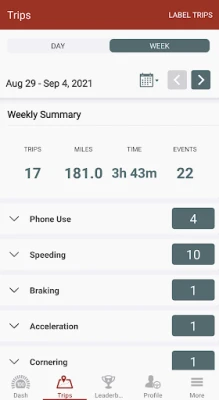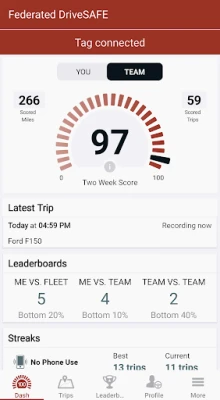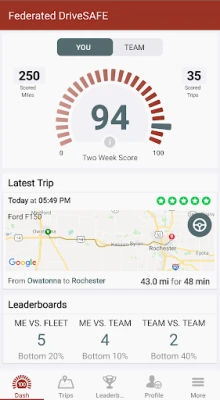
Latest Version
federated-v3.0.0.0-88758-g8591c39-prod
February 02, 2025
Federated Mutual Insurance Company
Finance
Android
0
Free
com.fedins.drivesafe
Report a Problem
More About Federated DriveSAFE
Maximizing Driving Performance: Insights, Trends, and Recognition
In today's competitive landscape, understanding and enhancing driving performance is crucial for both individual drivers and fleet managers. This article delves into the key components that contribute to driving performance, including performance scores, leaderboards, achievement badges, and feedback on driving behavior. By leveraging these elements, drivers can improve their skills and safety on the road.
Understanding Driving Performance Scores
Driving performance scores serve as a quantitative measure of a driver's skills and habits. These scores are typically derived from various metrics, including speed, braking patterns, acceleration, and adherence to traffic laws. By analyzing these factors, drivers can gain valuable insights into their performance and identify areas for improvement.
Performance scores can be influenced by several factors:
- Speed Management: Maintaining a consistent speed within legal limits is essential for safety and efficiency.
- Braking Techniques: Smooth and controlled braking can significantly enhance driving performance and reduce wear on the vehicle.
- Acceleration Patterns: Gradual acceleration not only improves fuel efficiency but also contributes to safer driving.
By focusing on these aspects, drivers can work towards achieving higher performance scores, which can lead to better safety records and lower insurance premiums.
Utilizing Leaderboards for Motivation
Leaderboards are an effective tool for fostering a competitive spirit among drivers. By displaying performance scores in a public format, drivers can see how they rank against their peers. This visibility encourages healthy competition and motivates individuals to improve their driving skills.
Key benefits of using leaderboards include:
- Increased Engagement: Drivers are more likely to engage with their performance metrics when they can see their standing compared to others.
- Goal Setting: Leaderboards help drivers set realistic goals based on their current performance and the performance of others.
- Recognition: Public acknowledgment of top performers can boost morale and encourage continuous improvement.
By integrating leaderboards into driving performance programs, organizations can create a culture of excellence and accountability.
Achievement Badges: Recognizing Milestones
Achievement badges are a powerful way to recognize and reward drivers for their accomplishments. These badges can be awarded for various milestones, such as completing a certain number of safe driving hours, achieving a specific performance score, or demonstrating improvement over time.
Benefits of implementing achievement badges include:
- Enhanced Motivation: Badges serve as tangible rewards that can motivate drivers to strive for excellence.
- Skill Development: By focusing on earning badges, drivers are encouraged to develop specific skills and improve their overall performance.
- Community Building: Badges can foster a sense of community among drivers, as they share their achievements and support one another in their journeys.
Incorporating achievement badges into driving performance programs not only recognizes individual efforts but also promotes a culture of safety and improvement.
Driving Behavior Feedback: Continuous Improvement
Feedback on driving behavior is essential for continuous improvement. By providing drivers with regular insights into their performance, organizations can help them identify strengths and weaknesses. This feedback can be delivered through various channels, including mobile apps, dashboards, or in-person meetings.
Key components of effective driving behavior feedback include:
- Real-Time Data: Providing immediate feedback allows drivers to make adjustments on the spot, enhancing their learning experience.
- Constructive Criticism: Feedback should be framed positively, focusing on areas for improvement while acknowledging successes.
- Actionable Insights: Feedback should include specific recommendations for improvement, enabling drivers to take concrete steps towards better performance.
By prioritizing driving behavior feedback, organizations can create a supportive environment that encourages growth and development among drivers.
Conclusion: Elevating Driving Performance
Maximizing driving performance involves a multifaceted approach that includes understanding performance scores, utilizing leaderboards, recognizing achievements with badges, and providing constructive feedback. By focusing on these elements, drivers can enhance their skills, improve safety, and contribute to a culture of excellence on the road. Embracing these strategies not only benefits individual drivers but also enhances the overall performance of fleets and organizations.
Rate the App
User Reviews
Popular Apps










Editor's Choice










